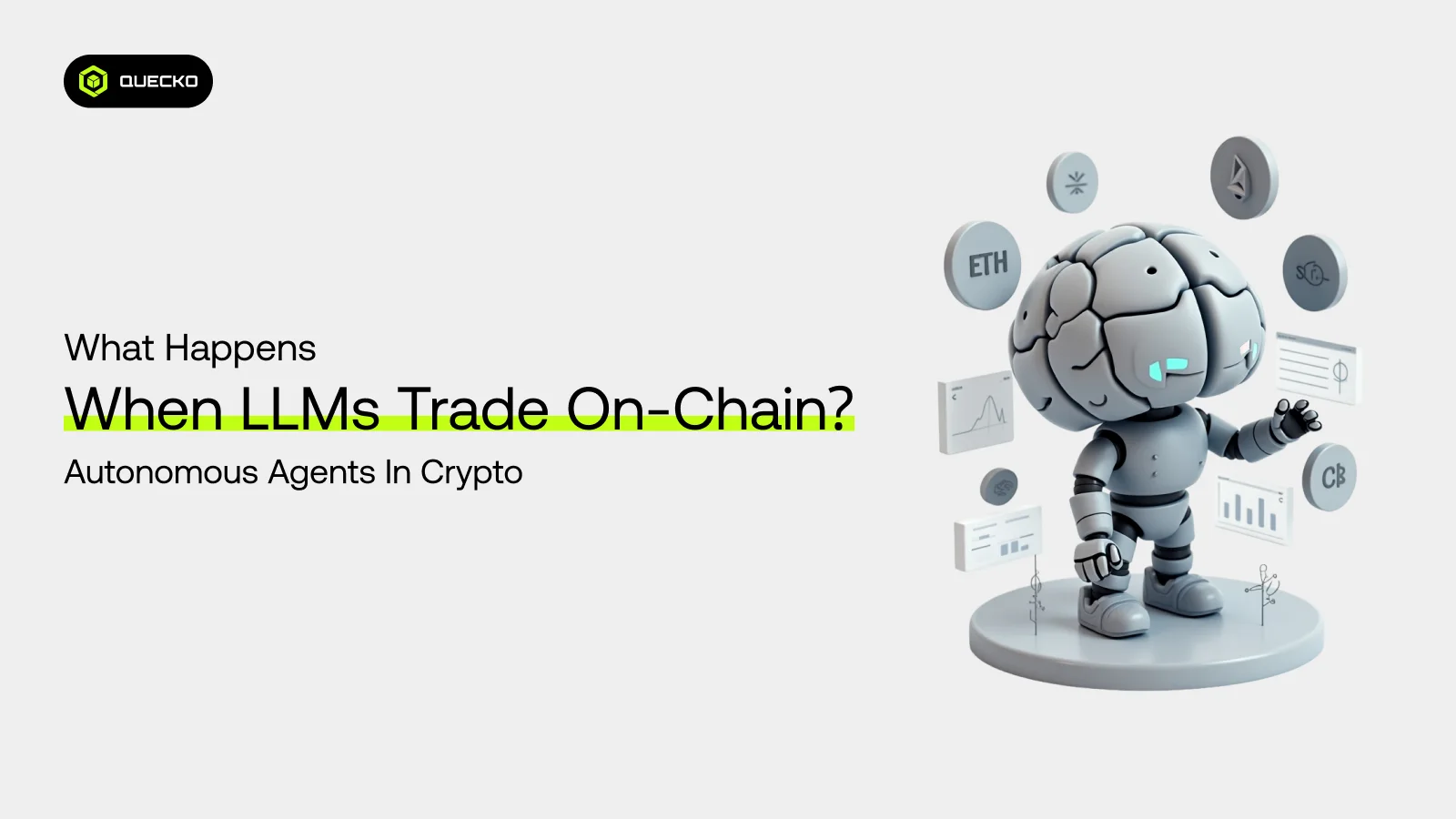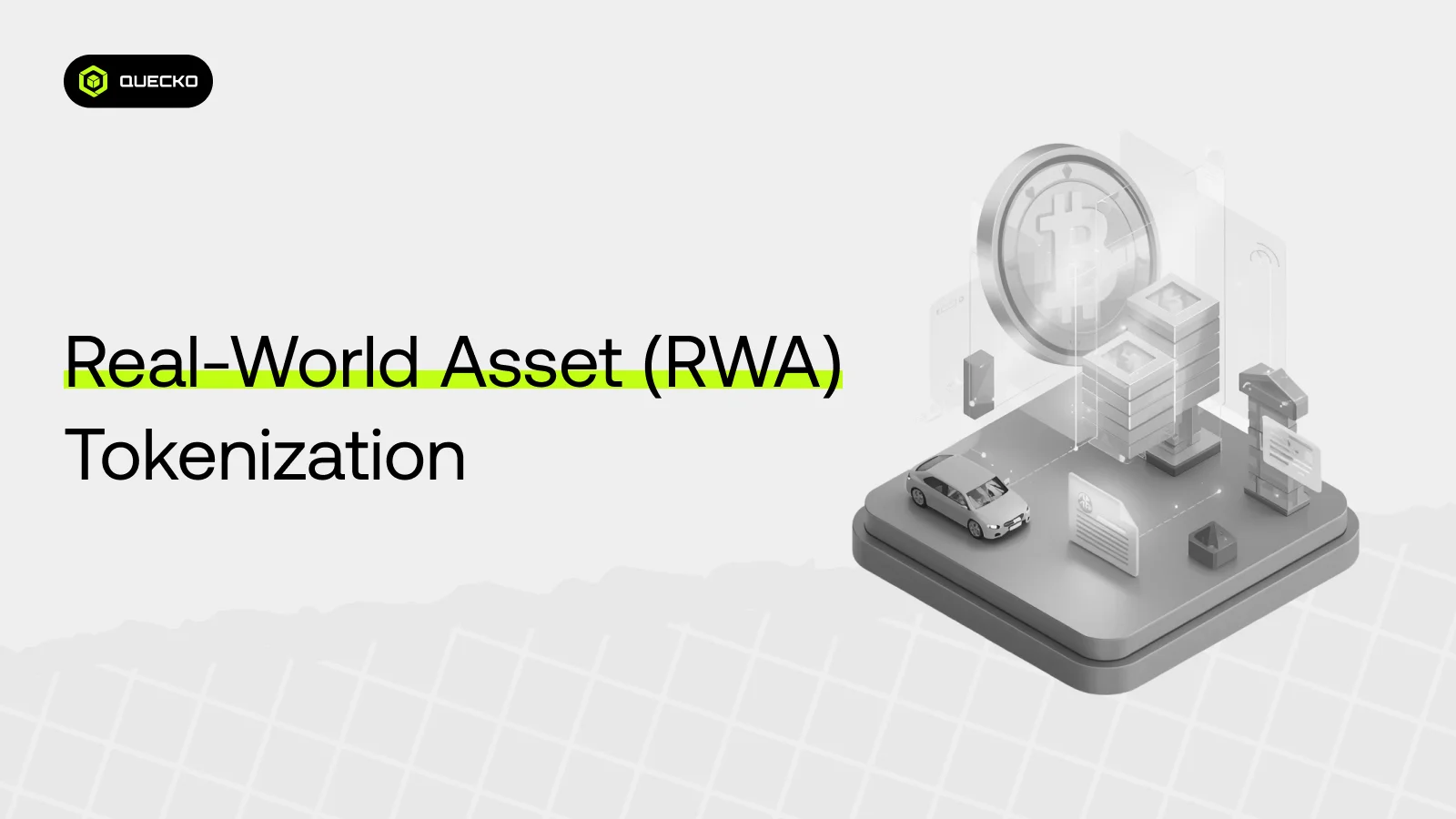What Happens When LLMs Trade On-Chain? Autonomous Agents in Crypto
Explore how large language models enable autonomous trading agents, transforming decentralized finance and redefining on-chain interactions.

In the rapidly evolving landscape of blockchain technology and artificial intelligence, the convergence of large language models (LLMs) with decentralized networks opens up a new frontier of possibilities. What Happens When LLMs Trade On-Chain? Autonomous Agents in Crypto explores the intriguing intersection where sophisticated AI-powered agents operate directly within blockchain ecosystems, driven by advances in machine learning, generative AI, and neural networks. By enabling AI agents to execute cryptocurrency trading, interact with protocols such as VIRTUALS protocol and Ocean Protocol, and make autonomous decisions on-chain, this paradigm challenges traditional notions of finance, automation, and trust in the crypto landscape.
This integration enhances blockchain applications and smart contract execution, offering innovative solutions that impact user experience and AI inference in decentralized environments. As these decentralized AI agents become more capable and embedded within the crypto landscape, understanding their potential, risks. This discussion delves into the mechanics, implications, and future prospects of deploying LLM-driven autonomous agents within blockchain ecosystems, reshaping how cryptocurrency trading is conducted and how blockchain applications evolve in the era of generative AI and intelligent automation.
The Rise of Autonomous Agents in Crypto
In recent years, the cryptocurrency and blockchain ecosystem has witnessed a transformative shift toward the development and deployment of autonomous agents—self-operating programs capable of executing complex tasks without human intervention. These AI agents are revolutionizing how digital assets are managed, traded, and interacted with, ushering in a new era of decentralized AI and decentralized automation. Technologies such as the VIRTUALS protocol and Trusted Execution Environments are enhancing the security and efficiency of these agents, particularly within cryptocurrency wallets. This evolution is paving the way for more secure, intelligent, and autonomous interactions in the digital asset space.
What Are Autonomous Agents?
Autonomous agents in crypto are intelligent, autonomous software entities that can perform predefined functions, make decisions based on programmed algorithms or real-time data, and interact with blockchain networks independently. They are often powered by smart contracts—self-executing contracts with the terms directly written into code—that facilitate trustless and transparent operations. These AI agents can be integrated with cryptocurrency wallets to manage assets securely, and they often operate within a multi-agent framework to coordinate complex tasks. In the context of the Stock Market, such agents can analyze market trends and execute trades automatically. Additionally, these agents frequently run on platforms like the Ethereum Virtual Machine, enabling seamless deployment and execution of smart contracts across decentralized applications.
Key Drivers Behind Their Rise
- Decentralization and Trustlessness: Blockchain technology ensures that autonomous agents operate without centralized control, reducing reliance on intermediaries and increasing transparency.
- Advancements in Smart Contract Technology: Platforms like Ethereum, Binance Smart Chain, and newer chains support complex smart contracts, enabling more sophisticated autonomous behaviors.
- Increased Complexity of DeFi Protocols: Decentralized Finance (DeFi) platforms require automated decision-making for lending, borrowing, yield farming, and arbitrage, often managed by autonomous agents.
- AI and Machine Learning Integration: Combining AI with blockchain allows agents to adapt and optimize strategies in real-time, enhancing efficiency and profitability.
Applications of Autonomous Agents in Crypto
-Decentralized Trading Bots: Automated trading agents that execute buy and sell orders based on market data, technical indicators, or arbitrage opportunities, operating 24/7 without human oversight.
Yield Optimization and DeFi Strategies: Agents that continuously monitor various protocols to maximize yield, rebalance portfolios, or perform liquidity provision automatically.
- NFT and Digital Asset Management: Autonomous agents that buy, sell, or stake NFTs based on predefined criteria, enabling passive income streams.
- Cross-Chain Operations: Agents facilitating seamless asset transfers and swaps across multiple blockchain networks, enhancing interoperability.
- Security and Monitoring Bots: Autonomous agents that detect suspicious activities, execute defensive measures, or trigger alerts, safeguarding assets in real-time.
Challenges and Risks
While autonomous agents offer numerous benefits, they also introduce challenges such as security vulnerabilities, coding bugs, and unforeseen behaviors that can lead to significant financial losses. The complexity of smart contract development necessitates rigorous testing and auditing. Additionally, regulatory uncertainties surrounding autonomous entities and automated trading can pose legal risks.
Future Outlook
The evolution of autonomous agents in crypto is poised to accelerate with ongoing innovations in AI, blockchain scalability, and interoperability. As the ecosystem matures, we may see increasingly sophisticated agents capable of executing multi-layered strategies, negotiating with other agents, or even participating in decentralized autonomous organizations (DAOs). These developments could significantly enhance efficiency, transparency, and decentralization within the crypto space.
Enter LLMs: The Brain Behind the Bots
In the rapidly evolving landscape of artificial intelligence, Large Language Models (LLMs) have emerged as the foundational engines powering intelligent bots and conversational agents. These sophisticated models—developed through advances in deep learning and natural language processing—serve as the “brain” behind a wide array of AI-driven applications, from customer support chatbots to virtual assistants and beyond.
What Are LLMs?
Large Language Models are neural network-based systems trained on vast quantities of text data. They learn to understand and generate human-like language by recognizing patterns, syntax, semantics, and contextual cues within the data. Models like GPT-3, GPT-4, and other similar architectures contain billions (or even trillions) of parameters, enabling them to produce nuanced and contextually relevant responses.
How Do LLMs Trade On-Chain?
Large Language Models (LLMs), such as GPT-4, are advanced AI systems capable of understanding and generating human-like text. While they are primarily used for natural language understanding, their capabilities can be extended to facilitate and automate trading activities on blockchain and decentralized finance (DeFi) platforms. “Trading on-chain” refers to executing trades directly on blockchain-based protocols, utilizing smart contracts on networks like Ethereum, Binance Smart Chain, or others.
The Role of LLMs in On-Chain Trading
LLMs can serve in various roles within on-chain trading ecosystems:
- Strategy Development: Analyzing market data, news, and social media to generate trading strategies.
- Trade Signal Generation: Interpreting complex data sources to produce buy/sell signals.
- Automated Trade Execution: Communicating with smart contracts to execute trades based on generated signals.
- Natural Language Interaction: Allowing users to interact with trading bots via natural language commands for easier control.
Data Analysis and Signal Generation
- Market Data Processing: LLMs can process on-chain data (like token prices, liquidity pools, transaction volumes) and off-chain data (news, social media sentiment).
- Pattern Recognition: Using their understanding, LLMs can identify trading opportunities, detect market sentiment shifts, or predict potential price movements.
- Generating Trading Instructions: Based on analysis, LLMs can produce structured instructions or signals, such as “Buy 100 tokens when price drops below X” or “Sell holdings if a certain pattern emerges.”
Communication with On-Chain Protocols
- To execute trades on-chain, LLMs need to interact with blockchain smart contracts:
- APIs and Middleware: LLMs typically do not connect directly to blockchains; instead, they communicate via APIs or middleware layers that translate natural language or generated signals into blockchain transactions.
- Smart Contract Interfaces: These interfaces include Web3.js, Ethers.js, or specialized SDKs that allow programmatic interaction with smart contracts.
Automated On-Chain Trade Execution
- Trade Execution Bots: Once the LLM generates a trading signal, an automation system uses smart contract calls to execute trades on decentralized exchanges (DEXs) like Uniswap, SushiSwap, or other protocols.
- Smart Contract Transactions: The system sends transactions to swap tokens, add/remove liquidity, or perform other DeFi operations, often signed with a private key controlled by the trader or an automated agent.
- On-Chain Settlement: The execution results in token transfers recorded immutably on the blockchain, completing the trade.
Security and Risk Management
- Verification Layer: To prevent malicious or erroneous trades, systems include verification layers, such as human oversight, limit orders, or multi-signature approval.
- On-Chain Audits: Smart contracts are audited to ensure they execute only intended functions.
- Gas Optimization: Efficient transaction design minimizes costs associated with on-chain operations.
Feedback Loop and Learning
- Performance Monitoring: The system tracks trade outcomes and adjusts strategies accordingly.
- Reinforcement Learning: Advanced setups might incorporate reinforcement learning, where the system learns from past trades to improve future decision-making.
Challenges and Considerations
- Latency: The time lag between data analysis and trade execution can impact profitability.
- Market Volatility: Rapid market changes can outpace the AI’s decision-making.
- Smart Contract Limitations: Smart contracts are immutable; thus, designing flexible and upgradeable contracts is crucial.
- Security Risks: Automated trading bots are targets for exploits; rigorous security measures are necessary.
In essence, LLMs can facilitate on-chain trading by analyzing diverse data sources, generating trading signals, and interfacing with blockchain smart contracts to execute trades automatically. This integration combines AI-driven insights with decentralized financial infrastructure, enabling sophisticated, automated, and potentially more responsive trading strategies within the blockchain ecosystem.
How Do LLMs Trade On-Chain?
Large Language Models (LLMs), like GPT-4, have revolutionized natural language understanding and generation. While traditionally used for tasks such as chatbots, content creation, or data analysis, recent developments have explored their potential in decentralized finance (DeFi) and blockchain-based trading. “Trading on-chain” refers to executing trades directly through blockchain smart contracts, without centralized intermediaries. Integrating LLMs into this process involves leveraging their capabilities to analyze, strategize, and execute trades within the security and transparency of on-chain environments.
Data Collection & Processing
- On-Chain Data Access: LLMs are integrated with blockchain oracles and APIs that provide real-time on-chain data such as token prices, liquidity pool states, transaction histories, and smart contract statuses.
- Off-Chain Data for Context: LLMs also consume off-chain data like news sentiment, social media trends, macroeconomic indicators, and market analysis to inform trading decisions.
Strategy Formulation & Decision-Making
- Natural Language Analysis: The LLM interprets complex textual data—such as financial reports, news headlines, or social sentiment—and extracts actionable insights.
- Algorithmic Trading Signals: Based on the analyzed data, the LLM generates trading signals, such as buy/sell recommendations, risk assessments, or portfolio adjustments.
- Custom Trading Strategies: Developers can fine-tune LLMs with domain-specific knowledge, enabling them to follow predefined trading strategies while adapting dynamically to market changes.
Generating & Executing On-Chain Orders
- Smart Contract Integration: The LLM communicates with decentralized applications (dApps) or smart contracts via API calls or embedded scripts. These smart contracts are programmed to execute trades based on signals received.
- Automated Trading Bots: The LLM-driven system acts as an autonomous trading bot, continuously analyzing data and submitting transactions directly to the blockchain to buy or sell assets.
- Order Execution: When the LLM determines that a trade is optimal, it signs and submits a transaction to the blockchain, invoking functions on decentralized exchanges (DEXs) like Uniswap, Sushiswap, or other AMMs.
On-Chain Verification & Safety
- Confirming Trade Conditions:
Smart contracts verify that the trade parameters meet certain conditions (e.g., slippage limits, gas fees, timing constraints) before executing. - Security & Trustlessness:
Since transactions are executed on-chain, the process benefits from blockchain’s transparency, auditability, and security features. - Handling Failures & Reversals:
Smart contracts can include logic to revert or pause trades if conditions change unexpectedly, ensuring safety.
Feedback Loop & Learning
- Post-Trade Analysis: The system reviews the outcomes of trades, feeding data back into the LLM for further learning and strategy refinement.
- Reinforcement & Fine-Tuning: Over time, the LLM can adapt its models based on performance metrics, optimizing trading accuracy and profitability.
Challenges & Considerations
- -Latency & Timing: Blockchain transactions have inherent delays; LLMs must operate within these constraints to be effective.
- Cost & Gas Fees: Executing on-chain trades incurs gas costs, which the LLM-based system must optimize to avoid economic losses.
- Security Risks: Ensuring the integrity of data sources and smart contract security is crucial to prevent exploits.
- Regulatory & Ethical Issues: Automated trading with AI raises questions about compliance and market fairness.
In short, LLMs can trade on-chain by acting as intelligent agents that analyze both on-chain and off-chain data, generate trading strategies, and execute transactions via smart contracts. Their ability to understand complex textual information, adapt strategies in real-time, and operate within decentralized systems makes them powerful tools for autonomous on-chain trading. As the technology matures, we can expect more sophisticated, secure, and efficient AI-driven trading ecosystems in the blockchain space.
Potential Benefits of LLM-Driven On-Chain Trading Agents
- Enhanced Decision-Making and Market Analysis: Large Language Models (LLMs) possess advanced natural language understanding and generate sophisticated insights from vast amounts of unstructured data. When integrated with on-chain trading agents, they can interpret market news, social media sentiment, regulatory updates, and on-chain activity reports in real-time. This enables more informed, timely, and context-aware trading decisions, improving the accuracy and effectiveness of trading strategies.
- Automated Natural Language Interactions: LLMs facilitate seamless human-machine communication, allowing traders and developers to interact with on-chain trading agents using natural language commands. This lowers the barrier to entry for complex trading operations, making advanced trading strategies accessible to users without extensive coding expertise. Users can query, modify, or optimize trading parameters through simple language interactions, increasing usability and engagement.
- Adaptive and Context-Aware Strategies: LLMs can dynamically adapt trading strategies based on evolving market conditions and incoming data. By continuously analyzing on-chain activity, news feeds, and sentiment signals, they can identify emerging trends, detect anomalies, and adjust trading tactics accordingly. This leads to more resilient and flexible trading approaches that respond effectively to volatile or uncertain market environments.
- Improved Risk Management LLMs can assist in assessing potential risks by analyzing historical data, market signals, and macroeconomic factors. They can generate risk reports, suggest stop-loss or take-profit levels, and simulate various scenarios, thereby enhancing risk mitigation. Automated risk management helps protect assets and optimize returns over the long term.
- Scalability and Efficiency: Automating trading decisions through LLM-powered agents significantly increases trading throughput and reduces manual effort. This scalability allows for the management of large portfolio lists and rapid execution of trades across multiple assets and markets. Additionally, by automating routine analysis and decision-making processes, human traders can focus on strategic oversight and higher-level planning.
- Transparency and Explainability: Advanced LLMs can provide explanations for their trading recommendations, enhancing transparency. Traders can understand the rationale behind specific actions, fostering trust and enabling better oversight. This interpretability is crucial for compliance, auditing, and refining trading strategies.
- Cross-Chain and Multi-Asset Compatibility: LLMs can facilitate on-chain trading across multiple blockchains and asset classes by understanding various protocols, standards, and terminologies. This interoperability broadens trading opportunities and allows for arbitrage, diversification, and portfolio optimization on a larger scale.
- Continuous Learning and Improvement: With ongoing training and fine-tuning, LLM-driven agents can improve their performance over time by learning from market outcomes, user feedback, and new data sources. This continuous learning cycle helps maintain competitive advantage and adapt to changing market dynamics. In summary, integrating LLMs with on-chain trading agents offers significant advantages in decision-making accuracy, user accessibility, adaptability, risk management, and operational efficiency. As blockchain and AI technologies continue to evolve, these synergies are poised to reshape decentralized trading ecosystems, making them more intelligent, responsive, and user-centric.
Challenges and Risks of LLM-Driven On-Chain Trading Agents
The integration of Large Language Models (LLMs) into on-chain trading agents presents a transformative step in decentralized finance (DeFi) and blockchain-based trading. While this innovation offers significant potential for enhanced decision-making, automation, and user interaction, it also introduces a complex landscape of challenges and risks that must be carefully addressed.
- Technical Challenges: Some of the technical challenges include
- Data Quality and Reliability:
LLMs rely on vast datasets for training, which may include outdated, biased, or inaccurate information. In the fast-paced environment of on-chain markets, relying on imperfect data can lead to suboptimal or erroneous trading decisions. - Real-Time Processing Constraints:
Blockchain transactions have inherent latency and confirmation times. Integrating LLMs, which often require substantial computational resources and time, can pose difficulties for real-time or near-real-time trading strategies. - Model Generalization and Overfitting:
LLMs may overfit training data or fail to generalize well to unseen market scenarios, especially during volatile or unprecedented market conditions, risking poor trading performance. - Complexity of On-Chain Data Integration:
On-chain data (e.g., transaction histories, smart contract states) is complex and often unstructured, making it challenging for LLMs to parse and interpret effectively without sophisticated preprocessing pipelines.
2. Security and Privacy Risks
- Exploitation and Manipulation:
Adversaries could exploit vulnerabilities in LLM-driven trading agents by feeding malicious or misleading data inputs, leading the agent to execute harmful trades or leak sensitive information. - Smart Contract Vulnerabilities:
Automated trading agents interact with smart contracts that may contain bugs or security flaws. Malicious actors could exploit these vulnerabilities, especially if the agent’s decision-making process is opaque or poorly understood. - Data Privacy Concerns:
Using external data sources or user inputs may risk exposing sensitive information, raising privacy concerns, especially if the data is not properly anonymized or secured.
3. Ethical and Regulatory Challenges
- Lack of Transparency and Explainability:
LLMs are often considered “black boxes,” making it difficult to interpret or explain trading decisions. This opacity complicates regulatory compliance and accountability. - Market Manipulation Risks:
Automated agents powered by LLMs could inadvertently contribute to market manipulation or flash crashes if they misinterpret signals or act in concert with other agents. - Regulatory Uncertainty:
The legal landscape surrounding AI-driven trading, especially in decentralized environments, is evolving. Regulatory ambiguities may pose compliance risks and impact the deployment of such agents.
4.Economic and Strategic Risks
- a. Over-Optimization and Herding: If multiple LLM-driven agents follow similar strategies, it can lead to herding behavior, amplifying market volatility and systemic risks.
- b. Dependence on Model Accuracy: Over-reliance on LLM predictions can result in significant losses if the models fail to adapt to changing market conditions or unforeseen events.
- Cost and Sustainability: Training, deploying, and maintaining large models require substantial computational resources, leading to high operational costs and environmental concerns.
5.Ethical and Social Risks:
- a. Displacement of Human Traders: Automation of trading activities may impact employment opportunities for human traders and analysts.
- b. Bias and Fairness: Biases embedded in training data could lead to unfair or discriminatory trading behaviors, affecting market fairness.
- In summary, while LLM-driven on-chain trading agents hold promise for revolutionizing decentralized finance through advanced automation and decision-making capabilities, their deployment is fraught with multifaceted challenges. Addressing these issues requires a multidisciplinary approach that combines robust technical safeguards, security measures, regulatory compliance, and ethical considerations to harness their benefits responsibly and sustainably.
The Future of Autonomous LLM Agents in Crypto
The integration of autonomous Large Language Model (LLM) agents within the cryptocurrency ecosystem is poised to revolutionize how digital assets are managed, traded, secured, and utilized. As LLM technology advances, its application in crypto promises increased efficiency, automation, and intelligence, transforming traditional paradigms.
- Enhanced Automation and Decision-Making: Autonomous LLM agents will enable real-time analysis of blockchain data, market trends, and macroeconomic indicators, facilitating proactive decision-making. These agents can autonomously execute trades, rebalance portfolios, or initiate strategic actions without human intervention, reducing latency and emotional biases inherent in manual trading.
- Intelligent Security and Fraud Detection
LLMs, trained on vast datasets, can identify suspicious activities, potential exploits, or fraudulent transactions with high accuracy. Autonomous agents could continuously monitor blockchain networks, flag anomalies, and even respond to threats by executing countermeasures, thereby strengthening the security infrastructure of crypto ecosystems.
- Decentralized Governance and Protocol Management
Autonomous LLM agents can participate in decentralized governance by interpreting proposals, summarizing community feedback, and even casting votes based on predefined strategic alignments. This would streamline decision-making processes and ensure more responsive protocol adjustments aligned with user interests.
- Smart Contract Development and Auditing
LLMs can assist in drafting, reviewing, and auditing smart contracts, reducing human error and increasing reliability. Autonomous agents could also propose improvements or modifications to existing contracts, facilitating continuous protocol evolution in a trustless environment.
- Interoperability and Cross-Chain Operations
Future LLM agents may serve as autonomous intermediaries facilitating cross-chain transactions, translating data and commands between diverse blockchain platforms, and managing complex multi-chain strategies. This enhances liquidity and usability across different crypto ecosystems.
- Personalized User Interaction and Education
Autonomous LLM agents could act as personalized advisors, guiding users through complex crypto concepts, investment strategies, or transaction processes. They could also educate newcomers, lowering the barrier to entry and fostering broader adoption.
- Challenges and Ethical Considerations
Despite promising prospects, deploying autonomous LLM agents in crypto raises challenges such as ensuring transparency, preventing malicious use, and safeguarding user privacy. Developing robust governance frameworks and fail-safe mechanisms will be essential to mitigate risks associated with autonomous decision-making.
- Regulatory and Legal Implications
As autonomous agents take on more active roles, regulatory frameworks will need to evolve to address issues of liability, accountability, and compliance. Clear policies will be necessary to integrate these AI-driven agents within existing legal structures.
In Summary, the future of autonomous LLM agents in crypto envisions a more intelligent, efficient, and secure ecosystem where AI-driven automation enhances every facet of digital asset management. While technical and regulatory hurdles remain, ongoing innovation and collaboration among developers, regulators, and communities will shape a transformative era for blockchain technology driven by autonomous AI agents.
Conclusion:
The integration of large language models (LLMs) as autonomous agents trading on-chain represents a significant evolution in the intersection of AI and blockchain technology. These AI agents, powered by advanced machine learning and neural networks, demonstrate remarkable capabilities in decision-making, adaptability, and executing complex strategies without human intervention, potentially enhancing market efficiency and opening new avenues for decentralized finance. Notably, frameworks like the VIRTUALS protocol facilitate decentralized AI deployment, enabling generative AI systems to operate securely within blockchain applications.
In the evolving crypto landscape, autonomous agents leverage AI inference to optimize cryptocurrency trading and smart contract execution, offering improved user experience and operational efficiency. Platforms such as Ocean Protocol support data sharing and ecosystem growth, further empowering decentralized AI initiatives. However, this advancement also raises critical considerations around security, transparency, and regulatory oversight. As LLM-powered autonomous agents become more prevalent in crypto trading, ongoing research and development will be essential to ensure their responsible deployment, mitigate associated risks, and harness their full potential to revolutionize financial ecosystems.
Date
2 months agoShare on
Related Blogs

How dApps Are Disrupting Traditional App Ecosystems
9 hours ago

The Impact of AI on Blockchain Fraud Detection
4 days ago

Real-World Asset (RWA) tokenization
5 days ago

Gamified DeFi: How Play-to-Earn Models Are Reshaping User Engagement
10 days ago







